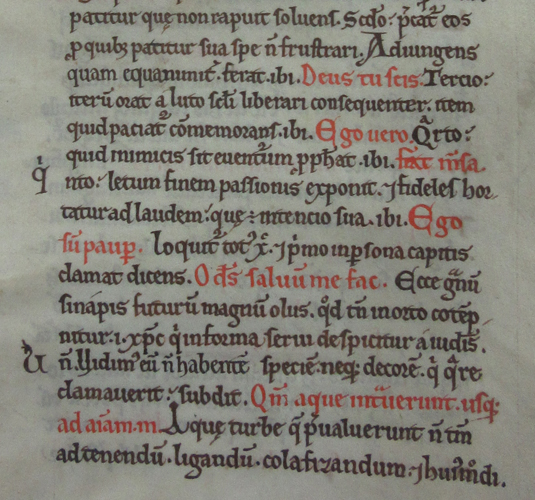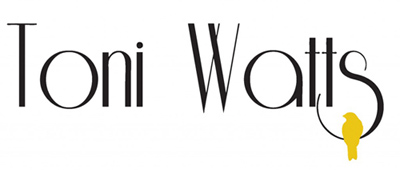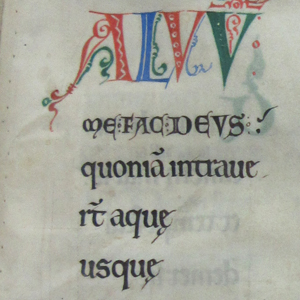As promised, here’s the manuscript in which I found the illuminated ‘S’ from my last post. It is Lincoln Cathedral’s MS 174, a twelfth century gloss, or commentary, on the Psalms.
It is a large book, measuring 345 x 230mm (and weighing a fair amount!), with 353 parchment leaves.
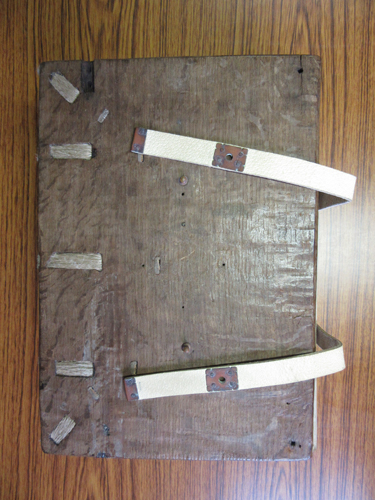
The oak front board was replaced between the mid 15th and late 17th centuries. There is no covering on the spine which lets us see how the quires of parchment were attached to the boards.
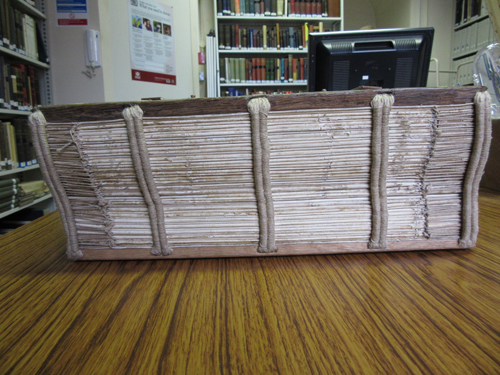
A number of illuminated letters have been cut out but the ones that remain are beautiful. Here’s f.154 (Psalm 68) with two gold ‘S’s.
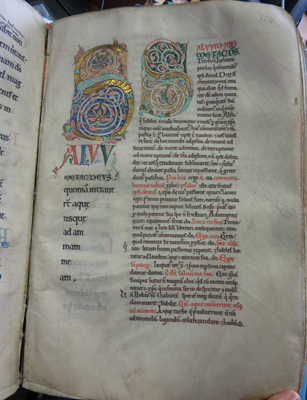
I couldn’t resist re-creating this, so here is my version of the left hand ‘S’ in shell gold, egg tempera and oak gall ink on Kelmscott vellum.
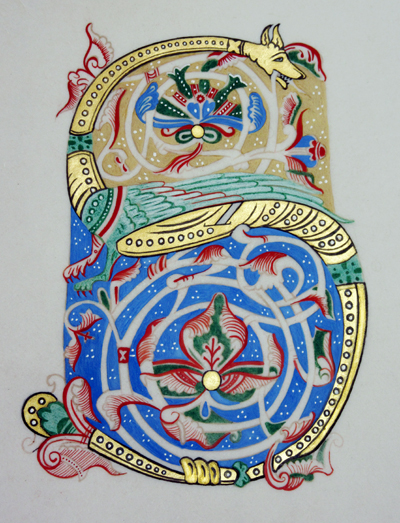
Rodney Thomson, who wrote the Catalogue of the Manuscripts of Lincoln Cathedral, says the decoration is similar to that in St Hugh’s Bible, or ‘The Auct. Bible’, made in Winchester in the twelfth century. When you look at images like this you can see what he means. The artist involved with that text is known as the ‘Entangled Figures Master’ and Thomson suggests that the style of work in the Lincoln manuscript is similar to that of one of his pupils. The illuminated letters don’t have the same human heads we can see in the St Hugh’s Bible, but who knows what images have already been excised.
It is a real privilege to handle a book that was created so many years ago and I am in awe of the skill of the painters and illuminators who worked in very different conditions t0 those I enjoy in the twenty-first century. It took me upwards of sixteen hours to re-create the image above which is 11cm tall. I can’t imagine how long the whole book took to produce, with not only the illuminations but the 350 pages of text, all written by one person!
